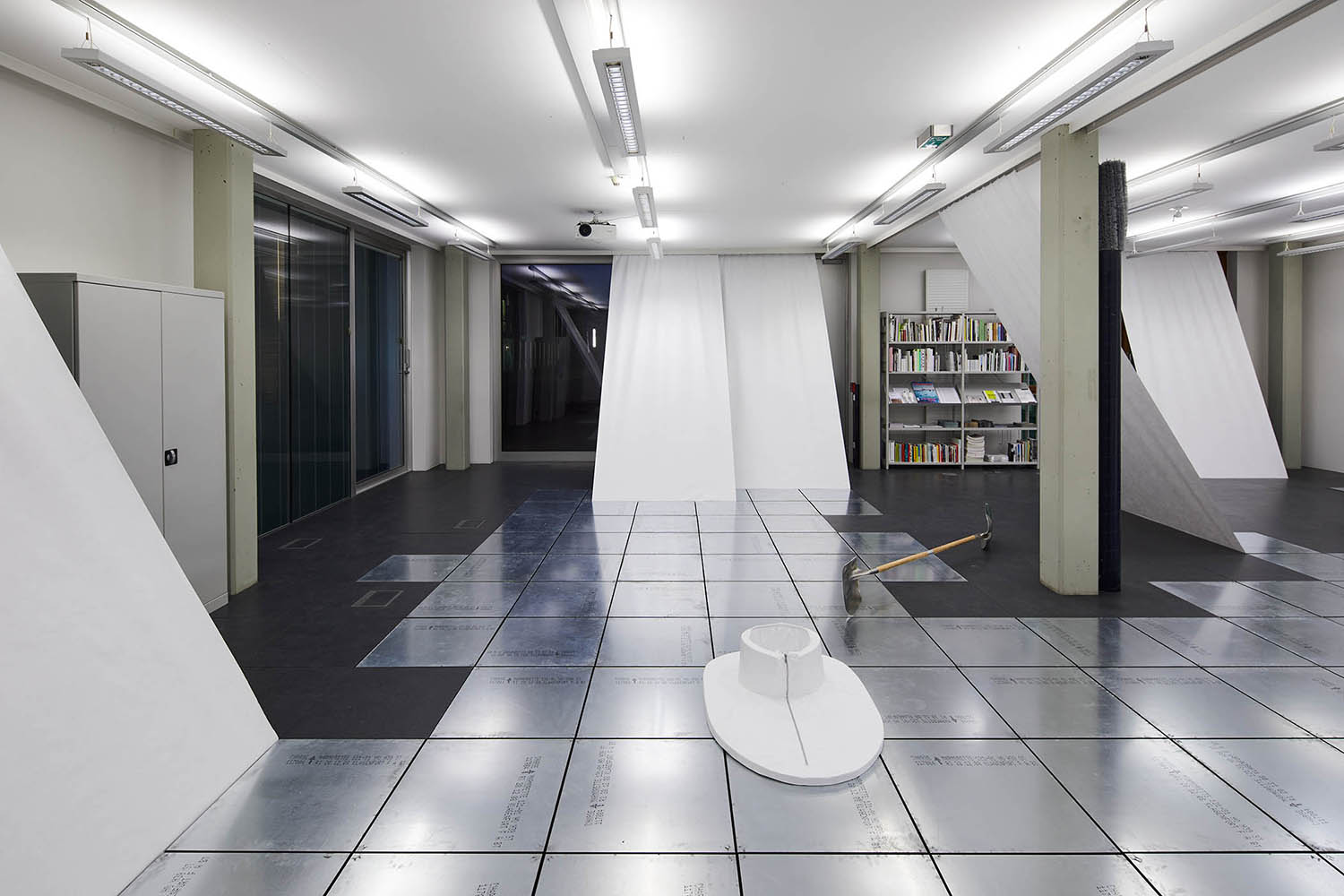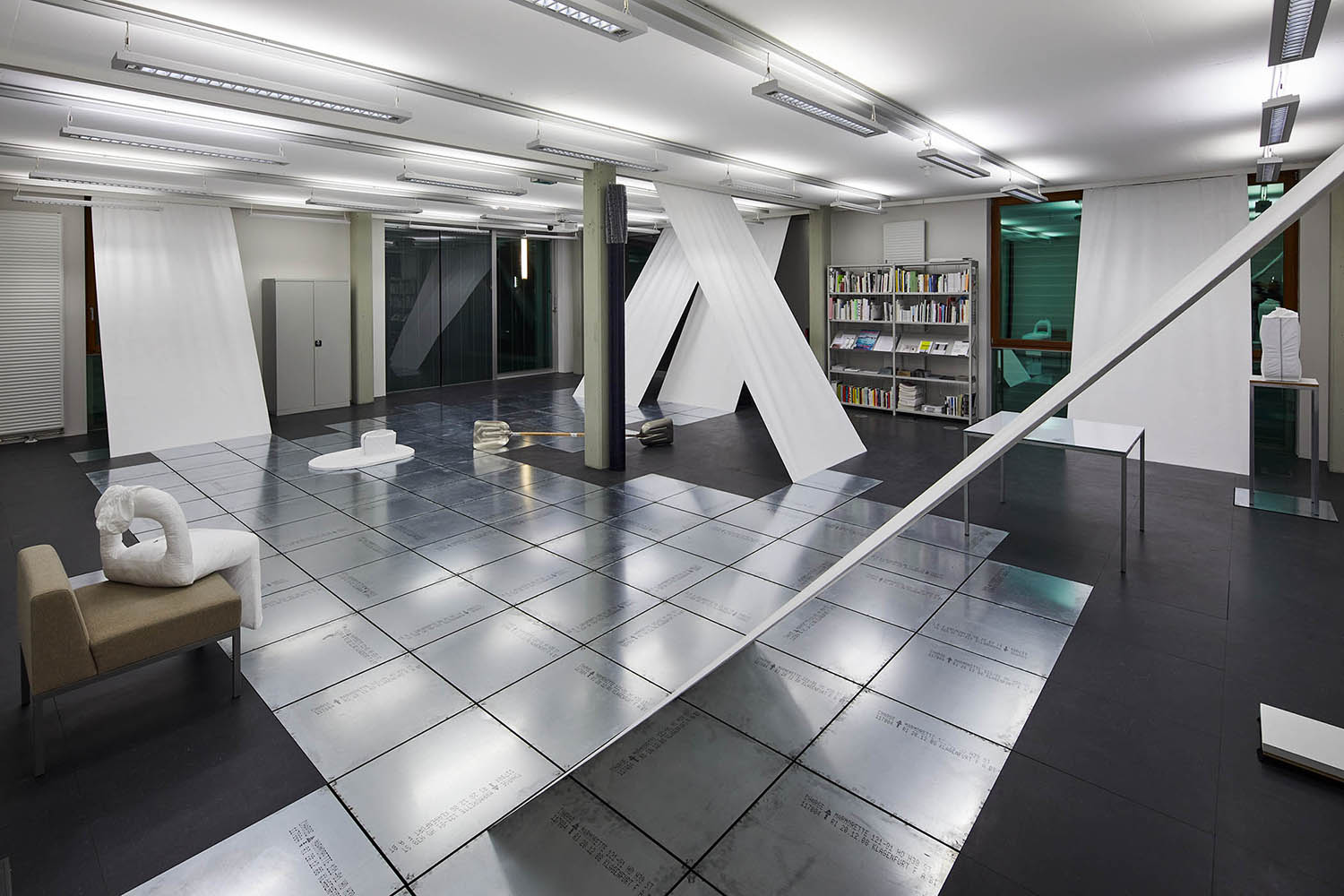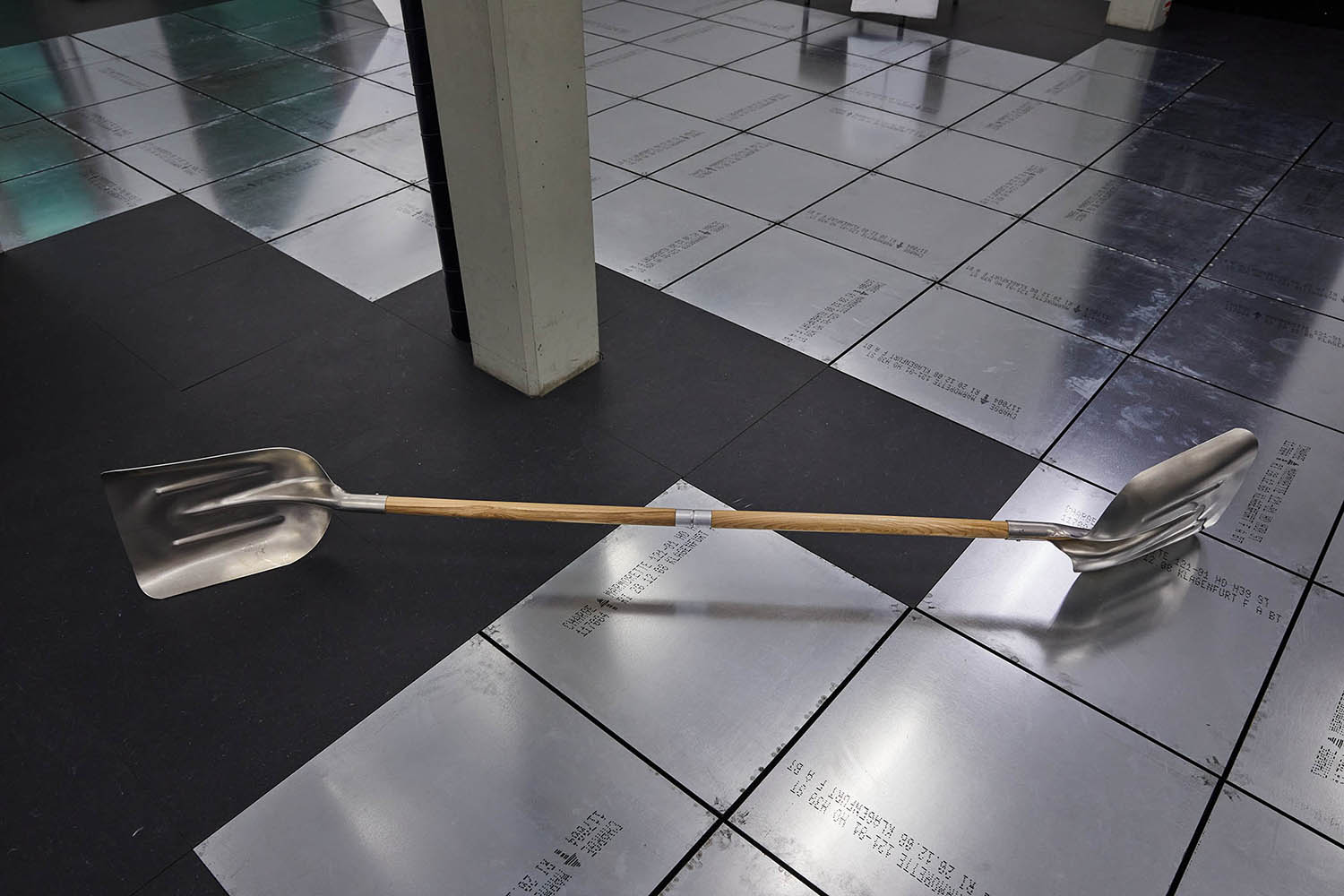Opening, March 7, 2023, 7 pm
Exhibition, March 8 – April 14, 2023
Liquid leaks, splashes, drips, it spills out. Often unintentionally. It seeps through porous material; its grease content combines with the new carrier, sticks to it and settles in tenaciously. Afterwards, it is almost impossible to separate the stain from the material it now permanently inhabits. How does a grease stain come about? Michail Michailov draws inspiration from the unintended, the disturbing, the undesirable. With colored pencils and a touch of obsession, he meticulously draws what normally should not be there and—especially in the art context—must be avoided at all costs. Stains are, after all, the very reason why white gloves are worn by all those who deal with precious originals in museums and other (art) institutions. Their job is to prevent body fat on the hands from bonding with the surfaces of artworks, documents, or rare artifacts.
The format of Michailov’s drawing grease stains (2023) coincides with the table on which it is presented and integrates seamlessly into the setting at Kunstraum Lakeside. It is quite likely that hasty exhibition visitors will overlook this drawing, as their attention is turned to the artist’s more expansive spatial interventions. For example, the white textile sheets made of Tyvek, mounted like curtains in the designated tracks, which function, however, in a completely different way. Like architectural elements, they join the ceiling with the floor, impinge into the space, complicating the relationship between outside and inside, between the envelope of the room and its contents. Without compromising the spatial substance, the curtains transform Kunstraum Lakeside in a subtle yet fundamental way.
Analogous things transpire on the floor. Michail Michailov has turned a number of the floor panels upside down. The underbellies of the otherwise anthracite elements have a silvery sheen and, despite their robustness, conjure memories of shimmering water surfaces in summer. At one point on the floor, a panel is missing, and the void is clad with the same white material as the curtains. The form and function of such shells are known from kayaking. They prevent water from entering the boat. This textile element titled spray skirt (2023) firmly links the body of the artist with the site of the exhibition, with the architecture of Kunstraum Lakeside: In a performance, Michailov appropriates the space between the floor and the subfloor, stretching out his legs where otherwise only cables and ventilation ducts run. Following the performance, the Tyvek shell lingers in the space like a memento of his body.
The artist also uses Tyvek to encase objects found on the street and transfer them into the art realm. In the series self-brainwasher (2021), as in other works, the color white serves as a blank sheet of paper waiting to be filled. Tabula rasa. In this way, obsolete objects are given a second life without changing their material properties. Michailov himself often wears protective suits made of this material in his performances. For instance, in the video gloss over (2021), which is screened in the cafeteria across the square in front of Kunstraum Lakeside, the artist is seen covering a white surface with the sand of a small island. Initially, he is wearing a white overall, but when the white surface is no longer recognizable as such, he takes it off. He adapts to his surroundings, seems to blend into them like a chameleon, dissolving to an extent.
In this video, Michail Michailov’s exploration of body and space goes beyond the occupation with the relationship between figure and ground, between a form and its surroundings, so virulent in art, and takes a turn toward fundamental questions about human existence, its conditions and potentials. The artist investigates these human aspects in drawings, videos, and performances, while staging the manifold variants of his “self” in site-specific installative settings. His precise yet humorous scope ranges from the microcosm of dust settled in his artist’s studio to the landscape he navigates as a body. Michailov’s artistic practice reads like a permanent attempt to reflect the large in the small and, conversely, to discover the small as a pattern of the large. In recurring routines, he tests the architectures and urban infrastructures that surround him. The places he traverses often have something ruinous about them: storage sites behind buildings, natural habitats used by humans—and then, but as a detail, an element among others, the artist. The colors, materiality, patterns, and formal conditions of the natural or urban landscapes into which Michailov inscribes himself with ever new bodily configurations testify to the artist’s existence to the same degree as they make his body vanish.
The exhibition on the other side in Kunstraum Lakeside offers visitors an insight into the artistic strategies Michail Michailov has developed over the years. The figure of the artist as it relates to the exhibition context can be read as an elucidation of human existence in general. For Michailov does not stage himself as a heroic subject, asserting himself against his environment, let alone at its expense, but as someone who integrates existing structures by triggering processes of alignment and adaptation, by imitating moments of connecting-to-the-environment and letting them take on a form of their own. His transformations and appropriations allow him to occupy in-between spaces hitherto untouched. Curtains interlock the space with its surroundings in a science and technology park, and the floor becomes a permeable membrane between the obvious and the evocative. Like an oily stain seeping into folded paper, manifesting in different forms on the carrier medium, the artist meanders through spaces, inserting himself in such a way that he becomes inseparable from his surroundings, in this case Kunstraum Lakeside. On one side and the other.
Michail Michailov (b. 1978 in Bulgaria) lives and works in Vienna and Paris.
www.michailmichailov.com












